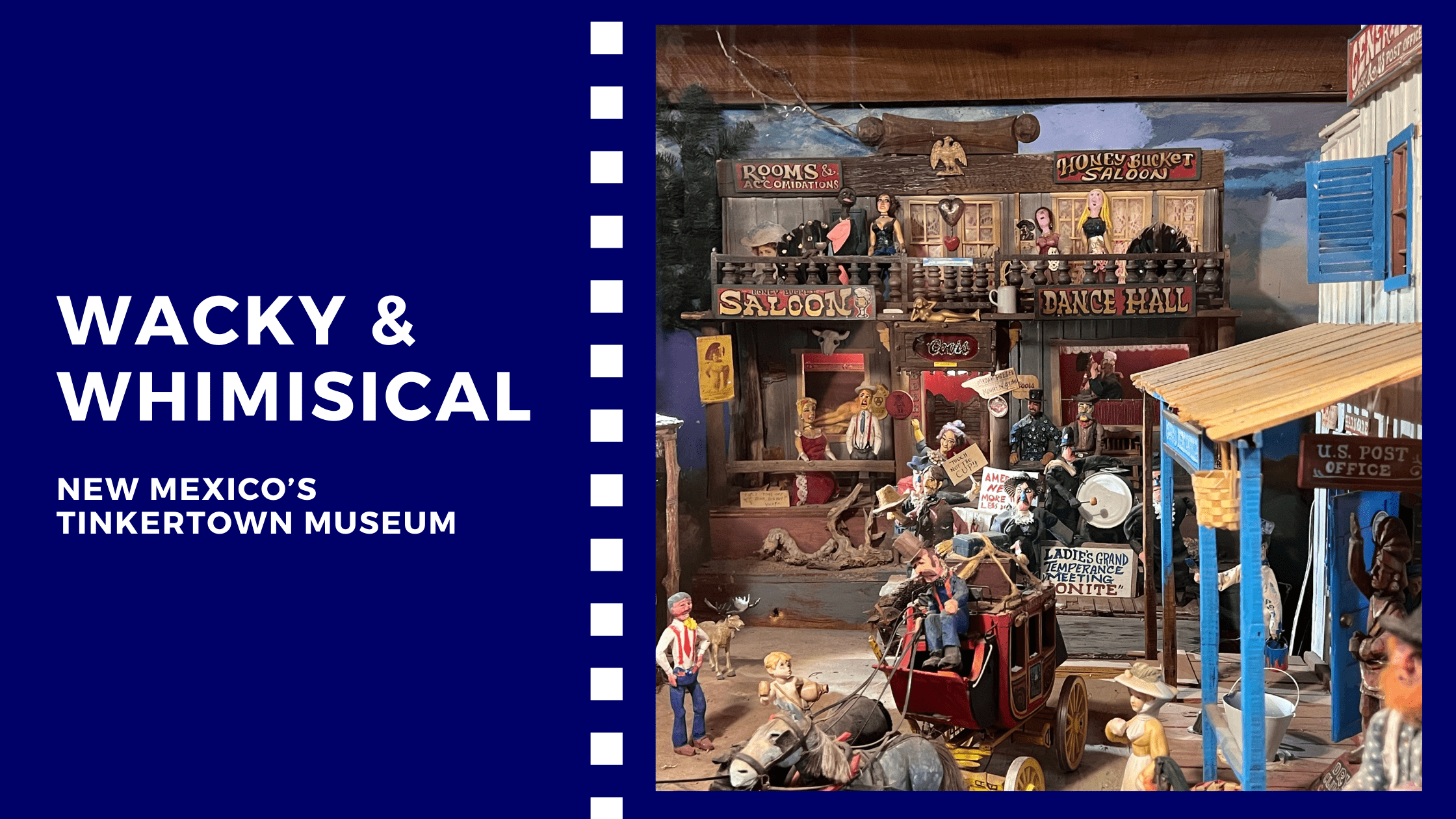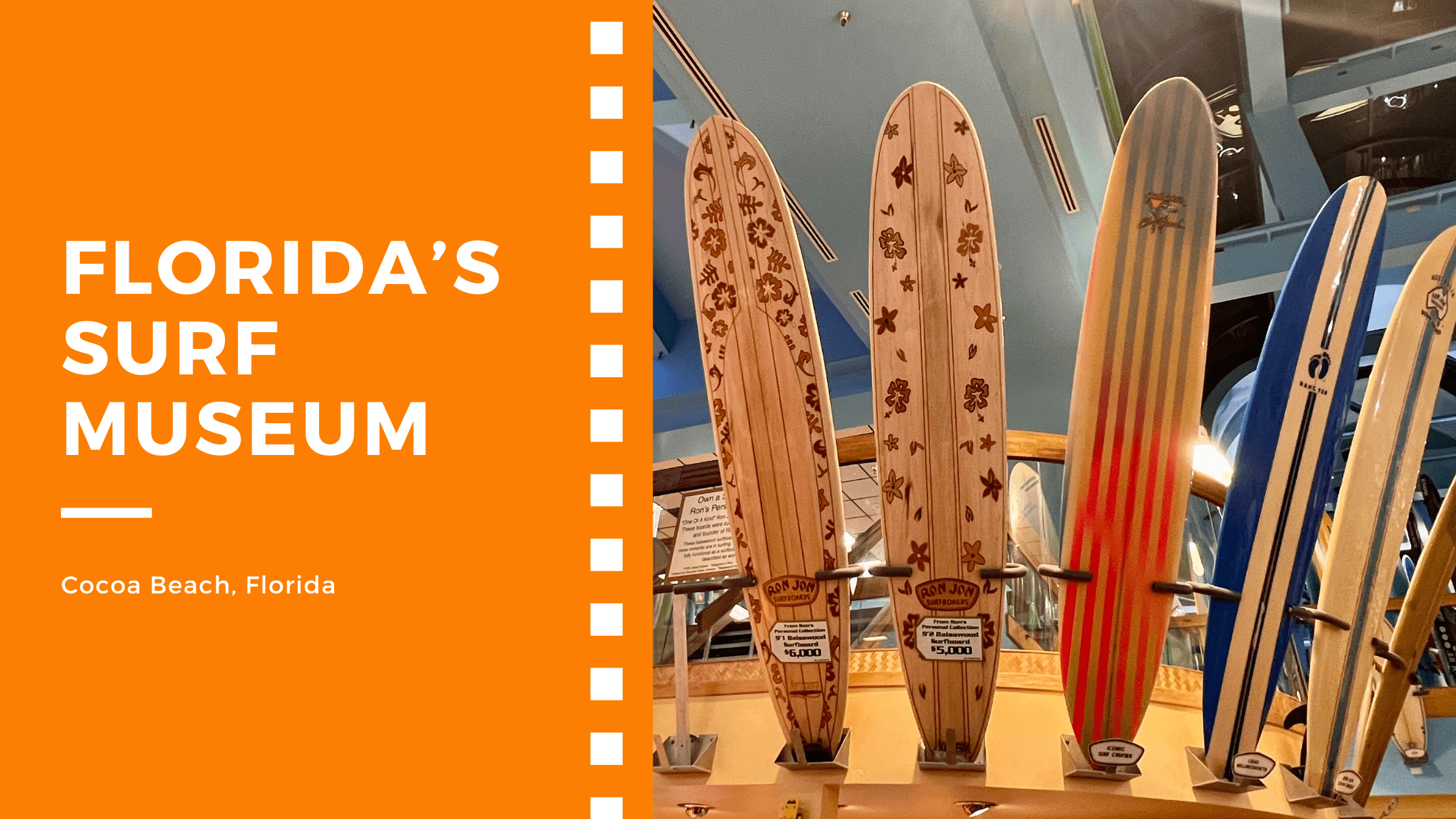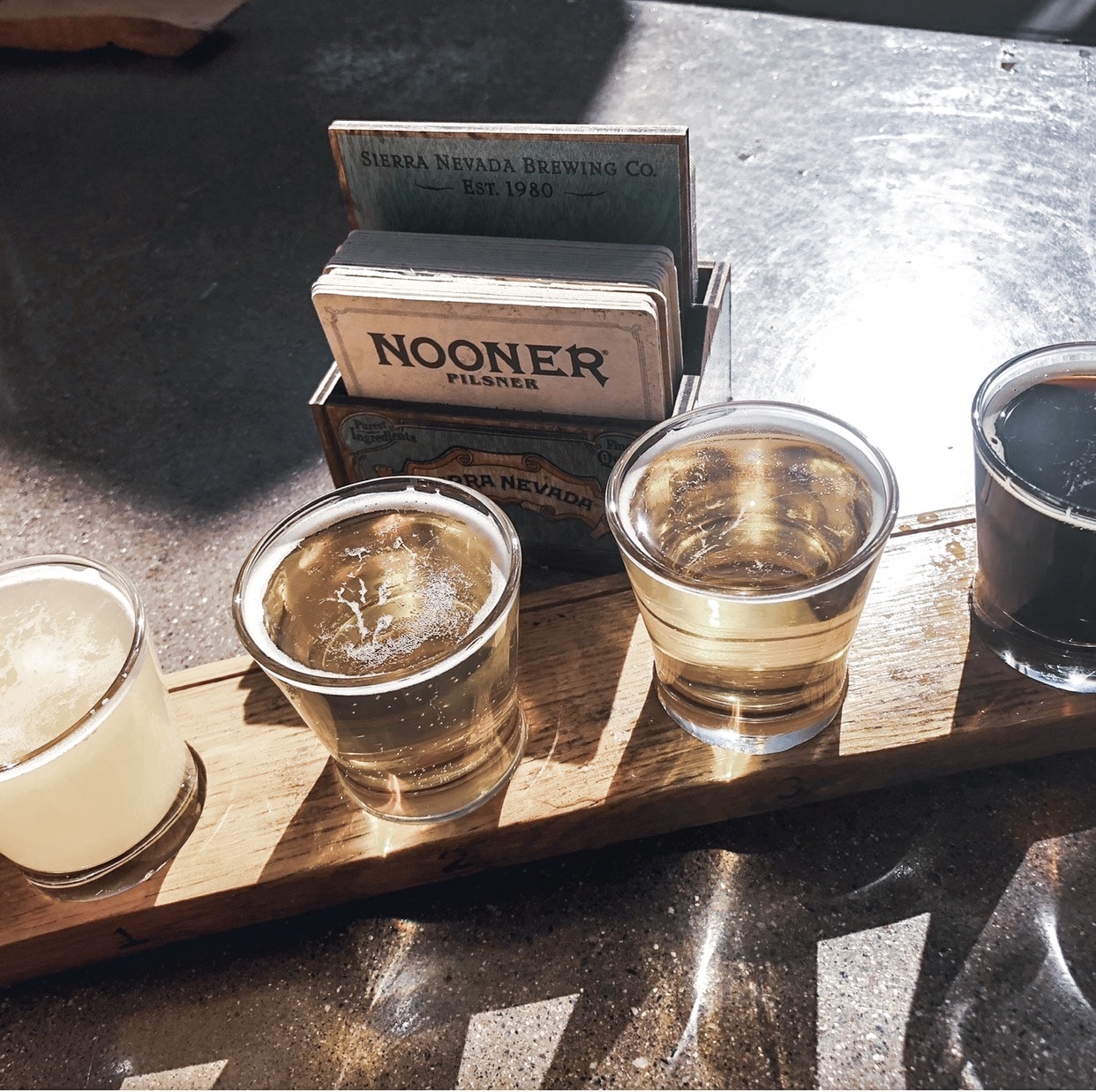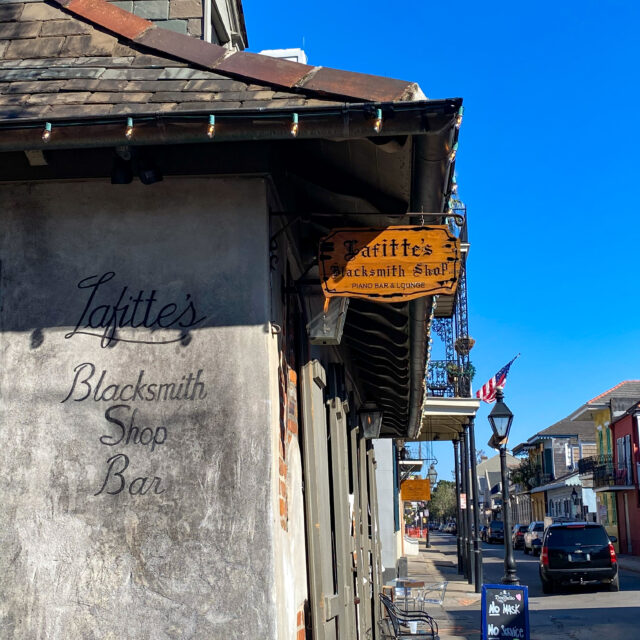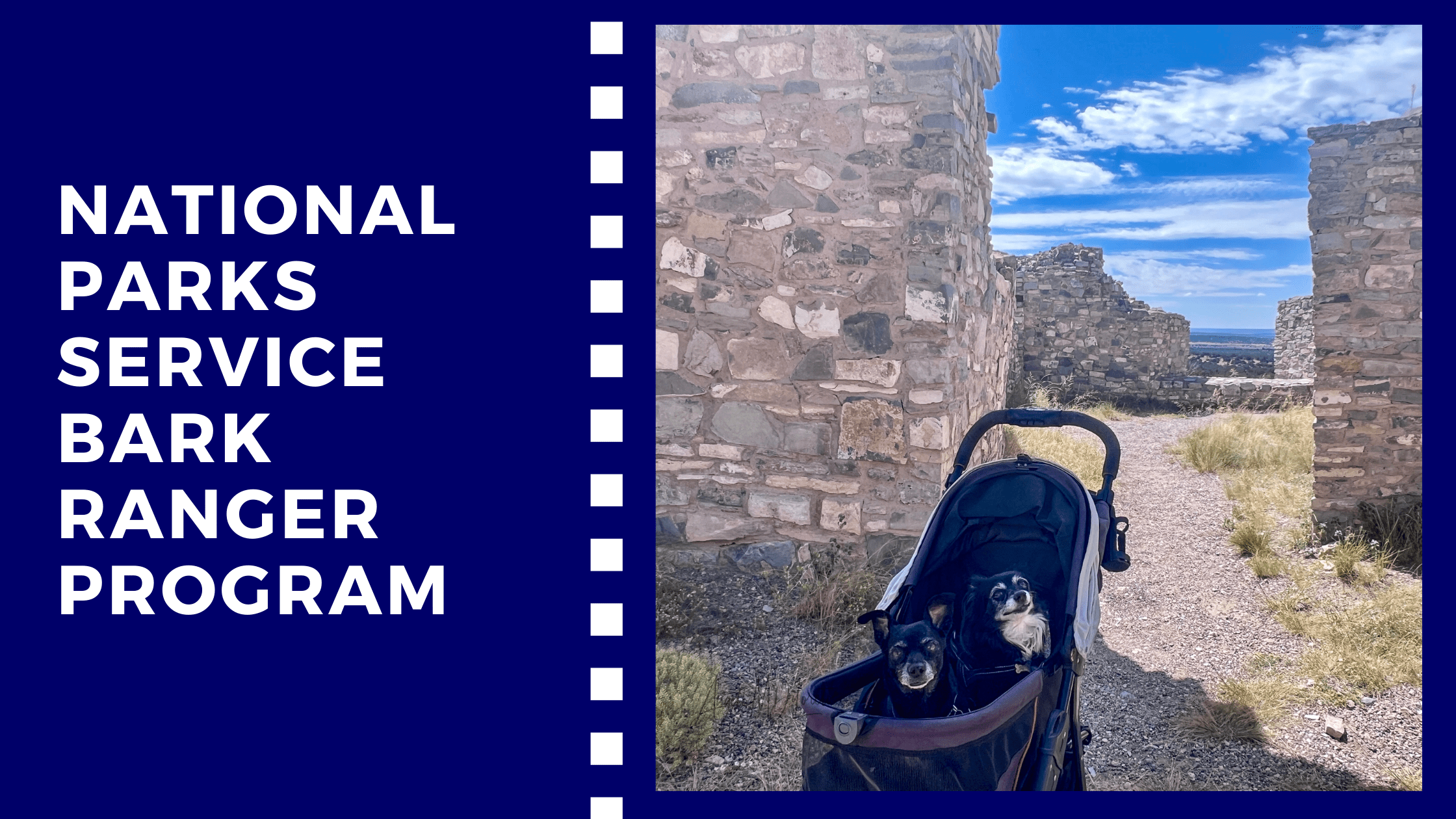Tucked behind Albuquerque’s Sandia Mountain, the Tinkertown Museum is a testament to creativity, imagination, and craftsmanship. Take the short drive out of Albuquerque and step into a world where hand-carved miniature displays and captivating folk art intertwine, creating a whimsical experience that has captivated travelers for decades.
Disclosure: Some links on our site are affiliate links. If you purchase a linked item, we will make a commission, at no extra charge to you.
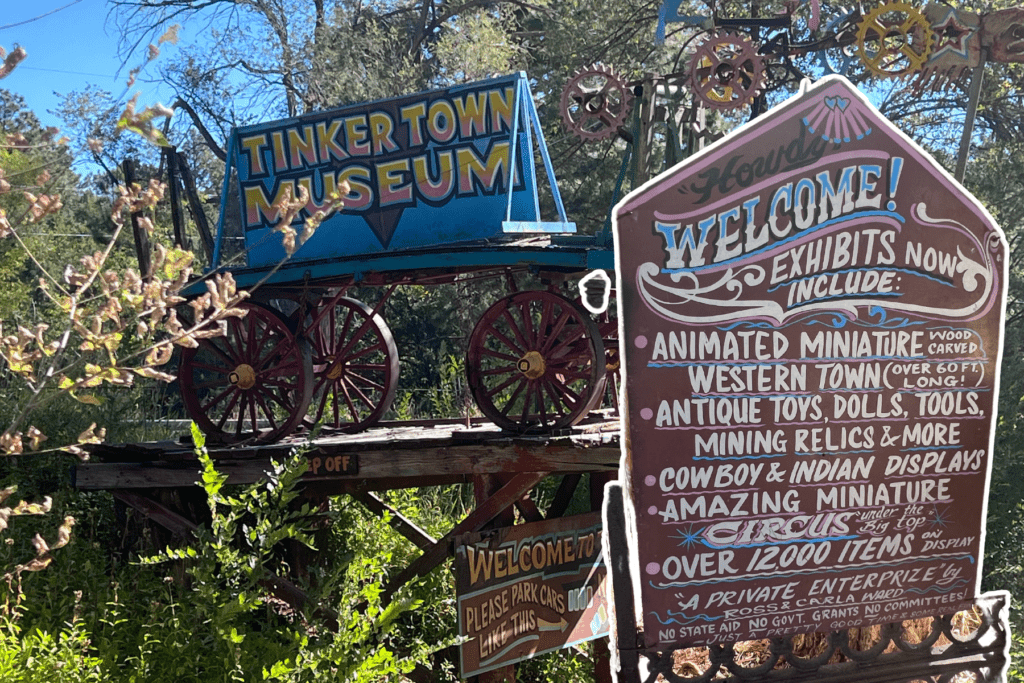
The History of Tinkertown Museum: One Man’s Passion for Art
The Tinkertown Museum is the product of Ross Ward’s lifelong dedication to folk art and miniatures. A self-taught artist born in South Dakota in 1940, Ward began carving tiny figures as a child. Over four decades, he built a remarkable folk art collection. After spending his early career painting signs for traveling carnivals, Ward collected trinkets and oddities during his travels, which inspired his artistic creations.
In the 1960s, Ward purchased land in the Sandia Mountains outside Albuquerque. Initially, he planned to create a personal studio to display his carvings, but as his collection grew, so did his vision. The space eventually evolved into the Tinkertown Museum. Ward built it by hand using repurposed materials like bottles, old tools, and wood. The museum opened to the public in 1983 and quickly became a local favorite. Even after Ward’s death in 2002, his wife, Carla, continues to manage the museum, preserving his legacy.
Ross Ward’s contributions to folk art left a lasting mark on the artistic community. His influence endures through Tinkertown, where visitors continue to experience the magic he created. The museum serves as a reminder of the power of imagination and creativity, turning ordinary moments into extraordinary experiences.
Today, thousands of visitors are drawn to Ward’s unique world, ensuring that his legacy of craftsmanship, humor, and joy continues for generations.

Crafting a Unique Folk Art Collection
By the 1970s, Ward’s collection had grown into a whimsical world filled with Old West towns, circuses, and intricate dioramas. Originally a personal project for friends and family, the collection soon attracted public attention. In 1983, Ward officially opened the museum, inviting guests to explore his vibrant, interactive world.
Ward believed art should be accessible and enjoyable. Tinkertown reflects this philosophy, with interactive exhibits that allow visitors to engage directly with the displays. Buttons and cranks bring scenes to life, from spinning carousels to Wild West shootouts.
The museum building itself is also a work of art, constructed from thousands of glass bottles and reclaimed materials. This reflects Ward’s belief in repurposing and finding beauty in everyday objects.
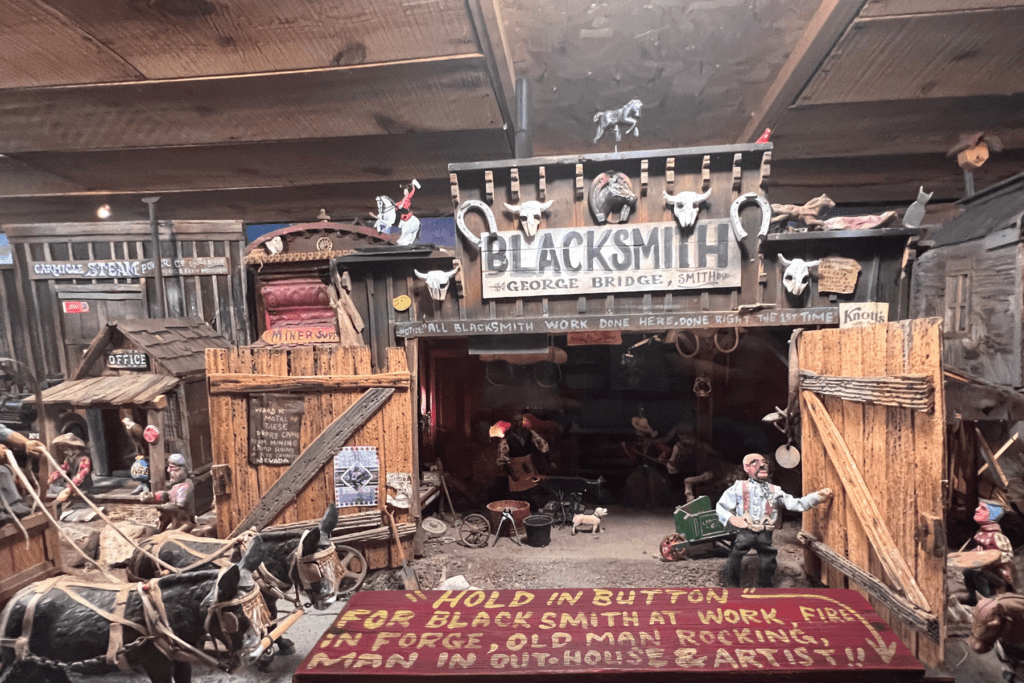
The Theodora R’s Round the World Trip
At the Tinkertown Museum, one of the most fascinating exhibits is a 35-foot wooden sailboat named the Theodora R. This boat wasn’t just a decorative piece but was used by Ross Ward’s brother-in-law Fritz Damler to sail around the world. For ten years, Damler navigated the oceans in this vessel, embarking on an incredible journey that covered 80,000 miles. Now resting within the museum, the boat serves as an inspiration for adventure and exploration.
For the next three years following his journey, he tried to sell the Theodora R. but had no takers. That’s when his late brother-in-law suggested putting it in his Tinkertown Museum. So, in 1994, they trucked the boat up here to the woods in the mountains of Albuquerque where visitors can see her and share in her adventure.
You can read about Fritz’s journey in his book Ten Years Behind the Mast: The Voyage of the Theodora ‘R’
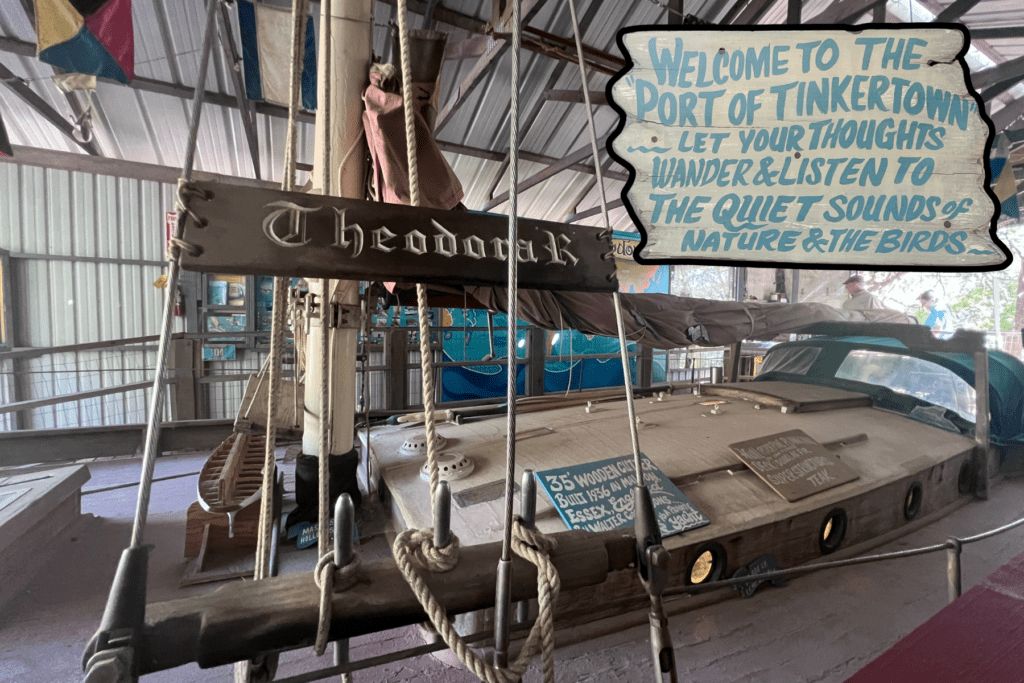
What Makes Tinkertown So Special?
Tinkertown’s charm lies in its intricate details and unique mountainside location. The museum features twenty-two interconnected buildings constructed from 50,000 glass bottles and other recycled materials. Every corner reveals something new—an Old West diorama, a vintage fortune-telling machine, or a lively circus scene.
The interactive nature of the exhibits invites visitors to push buttons, turn cranks, and immerse themselves in Ward’s storytelling. This hands-on approach sets Tinkertown apart from traditional museums.
Best Time to Visit Tinkertown Museum
Tinkertown’s location along the scenic Turquoise Trail adds to its appeal. The timing of your visit can significantly influence your experience, as weather and seasons play a role in the museum’s atmosphere.
When to Go:
- Spring (March-May): Mild weather and blooming wildflowers make this a quieter time to visit before the summer crowds.
- Summer (June-August): Peak tourist season with warmer temperatures. It’s best to visit early or late in the day to avoid the heat.
- Fall (September-November): Cooler temperatures and stunning autumn foliage make this an ideal time to visit with fewer crowds.
- Winter (December-February): The museum usually closes for the winter, reopening in early March depending on conditions.
For a quieter experience, weekdays are ideal, especially in the summer and fall.
Planning Your Tinkertown Adventure
Where is Tinkertown located?
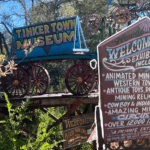
Tinkertown is at 121 Sandia Crest Road, Sandia Park, NM 87047, along the Turquoise Trail National Scenic Byway, about 30 minutes east of Albuquerque.
How much does it cost to visit?
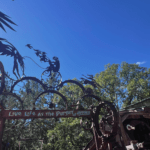
As of 2024, admission fees are:
Adults: $6
Seniors (65+): $4
Children (4-16): $3
Children under 4: Free
Check their website for updated pricing before your visit.
When is Tinkertown open?

Tinkertown is open from March through November, typically from 10 AM to 4 PM daily. Hours may vary, especially during holidays.
How long does it take to tour the Tinkertown Museum?
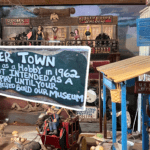
On average, visitors spend 1 to 2 hours exploring the museum but keep in mind this will take as long as you determine.
Is Tinkertown accessible for all visitors?

While not fully ADA accessible due to some narrow pathways and uneven surfaces, staff are available to assist those with mobility challenges. Contact the museum for specific accommodations.
Is photography allowed?
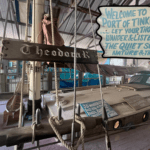
Yes! Visitors are encouraged to take photos of the quirky exhibits, but flash restrictions may apply in certain areas.
Can I bring my dog to Tinkertown?

Yes, well-behaved dogs on leashes are welcome. Consider your dog’s comfort in potentially crowded spaces.
Is parking available?

Free parking is available, but the small lot fills up quickly on busy days. Arrive early to secure a spot.
Is Tinkertown suitable for kids?

Absolutely! The playful displays and interactive elements make it a hit with younger visitors.

Tips for Visiting Tinkertown
- Arrive Early: To avoid crowds and enjoy a cooler experience during summer, plan to visit in the morning.
- Wear Comfortable Shoes: The museum features uneven surfaces, so comfortable footwear is recommended.
- Bring Water: Staying hydrated is essential, especially during summer visits.
Get lost where imagination and ingenuity intertwine at Tinkertown Museum. Situated in the heart of New Mexico, Tinkertown is an unmissable gem on your adventure through this enchanting state.
Nearby Attractions to Visit After Tinkertown
While Tinkertown is a destination in itself, the surrounding area offers plenty of attractions to explore:
- Sandia Peak: A short drive away, offering breathtaking views of Albuquerque. Ride the Sandia Peak Tramway to the summit at 10,378 feet (3,163 meters) for hiking, skiing (in winter), or simply taking in the views.
- Turquoise Trail National Scenic Byway: This historic route connects Albuquerque and Santa Fe, featuring charming old mining towns and artist communities like Madrid, known for galleries and unique shops. If you like folk art, visit the Folk Art Museum in Santa Fe too!
- Hiking in the Sandia Mountains: Outdoor enthusiasts can enjoy fantastic hiking opportunities, from the challenging La Luz Trail to the more family-friendly Tree Spring Trail.
- Petroglyph National Monument: A short drive back into Albuquerque, this site features thousands of ancient rock carvings created by Native American and Spanish settlers.


